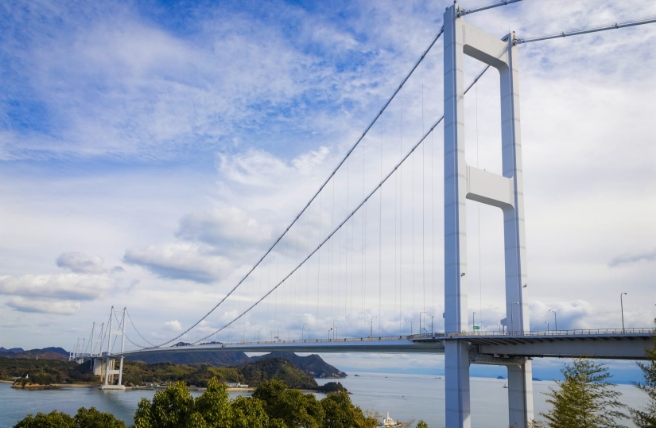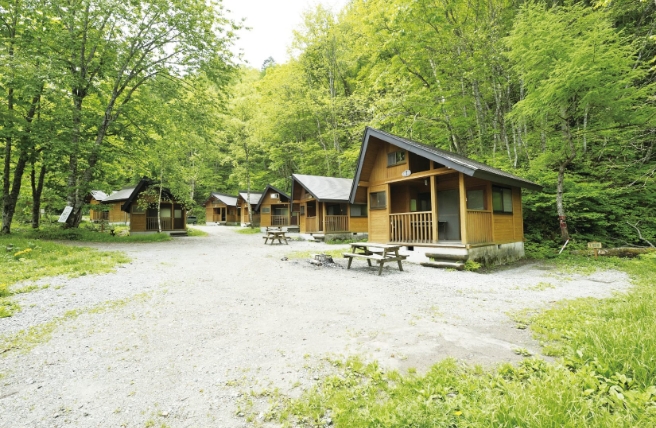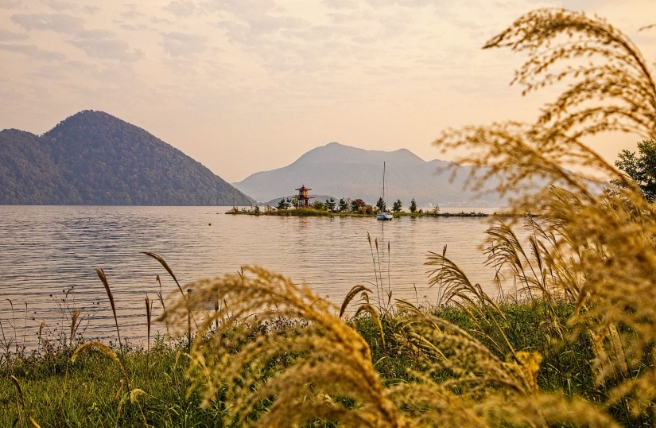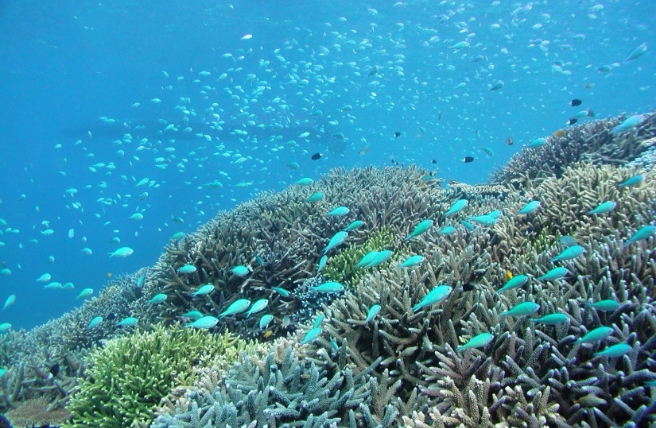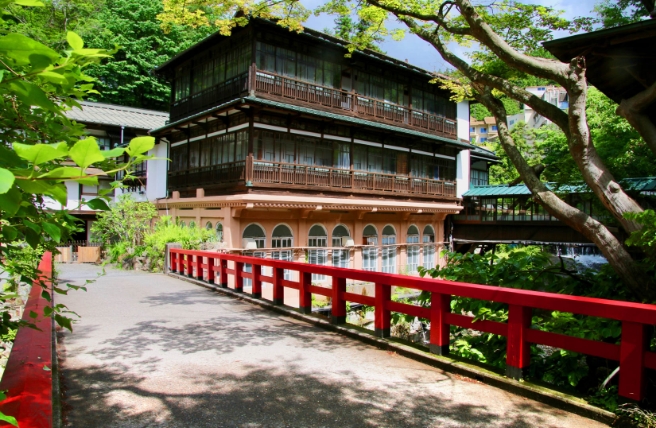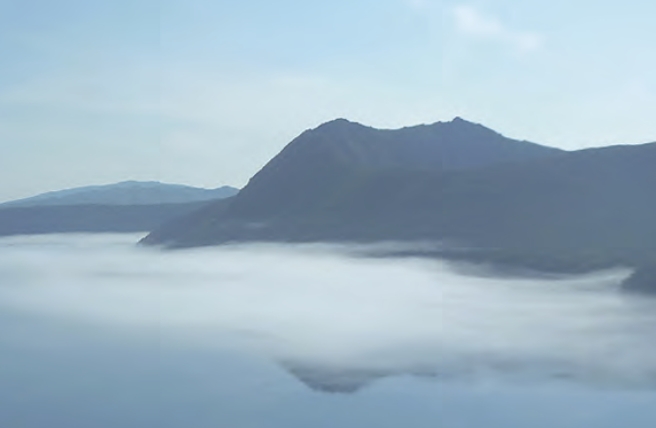Chichijima Island
Mountainous Chichijima is the second-largest of the Ogasawara Islands (it was recently surpassed by Iwo Jima following volcanic activity). Chichijima is covered in subtropical forest and marked by rugged cliffs, it also offers white sand beaches surrounded by dark blue waters.
One example is Miyanohama, a beautiful beach on the northern part of the island that offers superb snorkeling, stunning coral reefs and a large and varied population of fish. The currents outside the bay are powerful, so stay in the bay. You can also explore the rocky shores on either side of the bay.
Kominato Beach is the largest on the island, and boasts fine white sand and shallow, pellucid waters. Sakaiura Beach features the partly submerged wreck of a Japanese cargo ship, the Hinko Maru, which you can snorkel around.
Situated on the west side of the island is the Weather Station Observatory—a perfect place to view the sunset, and ideal for whale watching. You can sometimes spot humpback whales passing by during the winter.
Mount Asahi (267 m) is to the east of Futami Port. You’ll have beautiful views of the port and sea from its peak.
Set in the sea cliffs on the south shore of Chichijima is Chihiroiwa, a giant, red, heart-shaped rock around 200 meters high. It is a popular destination for trekking tours. If you are extremely lucky you may spot migrating humpback whales from this vantage point in the winter.
Nagasaki Observatory on the northern end of the island will give you views of Washington Beach and the island of Anijima. Off Anijima’s southern coast is Anijima Marine Park, where you can join a coastal eco-tour to see shoals of multicolored tropical fish and coral reefs in the clear blue water.
Visit the Higashidaira Akagashira Karasubato (Red-headed Wood Pigeon Sanctuary) to see the many rare and endemic species inhabiting the area, such as the Japanese wood pigeon. Join one of the occasional night tours for a chance to see the Bonin fruit bat, elusive creatures that are endemic to the Ogasawara Islands.
The stunning, uninhabited island of Minamijima is around a kilometer southwest of Chichijima. The area is a prime breeding ground for green sea turtles as well as a range of seabirds. The protected cove here has a clean white sand beach, bright blue sea and rocky cliffs. The bay connects to the ocean via a natural archway carved into the rock. Various tours—sea kayaking, whale watching and swimming with dolphins—are available.
Hahajima Island
Set 50 kilometers south of Chichijima, Hahajima is smaller but has stunning beaches of its own, and jungle for trekking through. Hiking trails lead up to the island’s highest peak, Mount Chibusa (463 m), which boasts a panoramic perspective of the island on a clear day.
The southern end of the island has a range of beaches and walking trails. Trek through the forest to the summit of Mount Kofuji at the southern tip to spot the smaller islands in the chain.
Along the path up to Mount Kofuji are several trails leading down to secluded beaches. Minamizaki Beach to the west offers translucent blue waters, coral reefs and excellent snorkeling.

View from Mount Kofuji on Minamizaki
Culture
Ogasawara National Park revolves around nature. Go snorkeling or scuba diving to see stunning coral reefs in the underwater scenery. Along with shoals of colorful tropical fish, you’re likely to see dogtooth tuna and greater amberjack.
This area is an egg-laying ground for the green sea turtles, which can sometimes be seen on sandy beaches during the breeding season. It’s a great place for whale and dolphin watching. Humpback whales are frequently seen between December and early May, while sperm whales can be spotted year-round. Ogasawara is a prime breeding ground for the humpback whale. Bottlenose and spinner dolphins also inhabit these waters.

